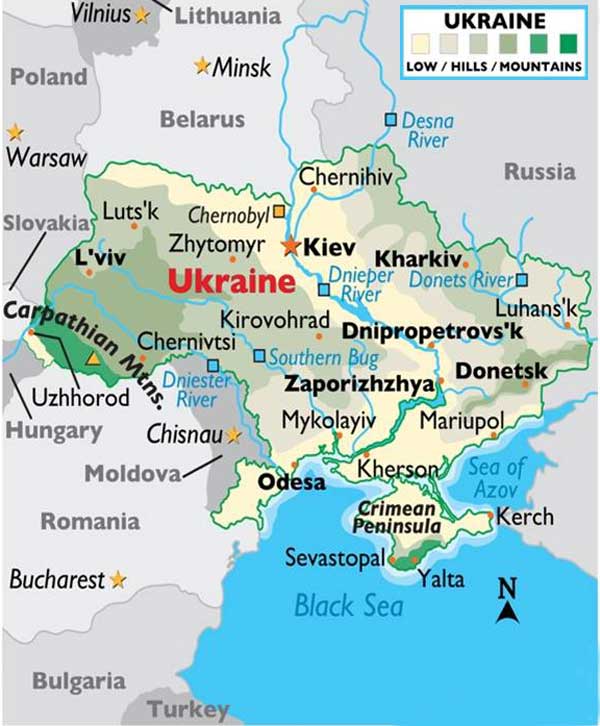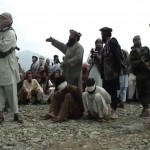Some of the places like certain individuals, are in one way or another, linked with war and war-like situations. India’s Panipat for one. The Mahabharata War. It saw Indian history’s longest wars fought for 18 days, longer than the 1971 Indo-Pak War that created a new nation. Lord Krishna called it a Dharmakhsetre – the field of righteous duty. It remained so as three more battles got contested here. 1526 (Ibrahim Lodi’s battle against invader Babur), 1556 (Marathas take on Moghuls), and, 1751 (once again Marathas against an Afghan intruder, Ahmad Shah Abdali). They changed the destiny of India.
Ukraine in Europe too bears the cognomen of ‘perpetual battlefield’. Excluding the earlier unrecorded local struggles, Ukraine and the Caucasus Mountains have recorded histories of the wars in 1850, 1854-56. It became the site of another Armageddon during World War II. But recall, the background of the epic masterpiece War and Peace by Leo Tolstoy (1828-1910). Tolstoy took part in the 1854-1856 wars. These war-time experiences helped him write his magnum opus. Though it got based primarily on historical events of 1805, 1807, but more prominent was the Napoleonic War of 1812, that ravaged Moscow and the miserable retreat of the invaders.
A disservice to history would occur if the stupendous foray in 1222 by Chenghez Khan gets ignored. It brought his forces to the doorstep of Kiev (today’s Kyiv). The great Genghis, as he was then called, had his Generals Subedi and Jabe encircle the Caspian Sea region and defeat every army on their path, before finally retreating.
In 1500, barely three centuries later, when Russia began to look for more leg-space in warmer climates and resources, Ivan the Terrible started Russia’s southward extension. It resulted in the capture of warm water ports on the Black Sea and, indeed, the farmlands and the ‘bread-basket’ of Ukraine. This finally resulted in the occupation of the Caucasian regions of Armenia, Azerbaijan, and the oilfields of Baku on the Caspian Sea.
About two centuries later, Catherine the Great of Russia (1729-98) with success extended the southern and western boundaries of Russia into Crimea, part of Ukraine, Belarus, Lithuania, and even Poland. The Russo-Turkish war that followed, gave Russia firm access to the Black Sea.
Little seems to have got recorded of this region during the so-called ‘Great War of 1914-18’, except an odd reference to the movement of reinforcements to the actual war fronts of France and Flanders. Yet, it played a decisive role during the Hitler–initiated Second World War. “Moscow-Moscow” Adolf Hitler would repeat his obsessive utterances before his military commanders and add vaingloriously, even with contempt “I must have Moscow. I must belittle the so-called proletariat Marshal Stalin…”
Hitler’s obsession and directive led to one of the greatest operations in Russia. Three Army Groups- ‘South’, ‘Centre’ and ‘North commanded by the best military strategists got involved. Von Rundstedt, Bock, and Leeb moved their 60 divisions with swiftness. Comprising Panzers, Motorised and Infantry they struck and enveloped Moscow. Rundstedt’s Southern Army manoeuvred into Ukraine through Odesa, Kiev (now Kyiv) leading over the Caucasus Mountains and further east towards the Baku oil fields. It was grand planning. Nonetheless, the harsh Russian winter and Hitler’s obduracy to `not withdraw or readjust and re-deploy formations to counter the stiffening opposition, neutralised the great strategic advantage that the Germans had acquired. Eventually, the Germans under Paulus’ 6th Army surrendered on January 1943 outside Stalingrad.
Post-1990, Russia, by now reduced to a shadow from its gigantic ‘Soviet Union’ began to rebuild its defence forces including its nuclear power. The former Baltic States of Ukraine, Belarus, Lithuania, Latvia, and Estonia served as a barrier with the NATO-supported European Union. For, the primary aim of Russian national strategy, hinged on keeping the western border safe against NATO and keeping its access to the Black Sea –Sea of Azov open. Thus leading finally to the Mediterranean Sea over the Bosphorus and the Dardanelles Straits. This led to the capture of Crimea in 2014 besides creating what came to be known as the Separatist region of Southern Ukraine by name of the ‘Luhansk-Donetsk region’. So, the Russian strategy hinged on dominating the areas of sea lanes. Built with this need was to have a friendly Ukraine on lines of Belarus, which had remained an enduring friend of Putin’s Russia.
That is the history of recent times. There are indeed, other reasons for creating situations conducive to or adding to the Russian fears and antagonism. The expansion of NATO to the east by 2000, a decade after the collapse of the USSR, with some fourteen new members including Estonia, Latvia, Lithuania got added to the NATO. Kosovo got created out of Serbia. Ukraine and Georgia got offered ‘welcome entry’ into it in 2008. Russia reacted and intervened in Georgia and took over Abkhazia and Ossetia. The capture of Crimea followed in 2014.
The present military intervention is not `off – the spur’ as being contended but for reason, strategic. The economic one included the EU’s energy dependence on Russia which supplied almost 40% of gas and 30% of oil, added to the Russian emboldenment. It was thought that even if the EU cut this source, Russia could always siphon it to the other needy nations including China, their latest buddy. The Sino-Russian friendship has been growing steadily and the present developments has spurred it further.
The internal situation, the political jugglery, and the spheres of influence created inside Ukraine, unfortunately, were hardly conducive to unity. The previous Prime Minister Victor Medvechuk, said to be friendly with Russian President Putin was unceremoniously, albeit electorally replaced by Volodymyr Zelensky in 2019. Zelensky, on his part, got condemned during the Covid crisis. The so-called Russian-backed separatists of the Donbas Basin have grown not only pro-Russian but anti-national too through and through. To add to it, Zelensky sought an alliance with the NATO and EU. The reaction and support to the Zelensky government by the NATO and EU have nevertheless been a guarded one. Though small contingents of US and EU troops got stationed in and around Ukraine, they too looked askance when Putin mobilised Russian troops to action on February 24, 2022. And as the situation developed, Ukraine’s membership got denied.
Russia demonstrated its intentions and military objectives when on February 24th, Putin conducted an open-door–open-air discussion of the forthcoming military operation against what he named as “de-Nazification’ and ‘denuclearisation’ of a hostile neighbour with members of his national security council. He highlighted the so-called ‘existing threats to Russia’ through ‘anti-Russian developments’ which, he said, ‘called for strategic solutions’. All members of the council presented the threat to Russia from the West. They suggested solutions. And finally, Putin summed up the meeting. To most observers, it was an exercise in Russian propaganda! It lulled not only Ukraine but NATO and EU too until the Russian military offensive commenced on 25 February.
As things are today, Russia has expanded its hold on the region bordering the Sea of Azov-Black Sea, hit hard at nuclear facilities, destroyed communication installations including airfields, and forced millions of Ukrainians to flee their homeland to the neighbouring countries. There is small material support to Ukraine by the US, UK, Germany, and the Ukrainian militia is trying to provide some resistance, but it is a battle of a mythical David against the monster Goliath. It is hoped that Russia’s ‘March of Folly’ ends sooner than later and for Ukraine, despite deaths and destruction, an abiding hope of survival remains. And out of this din and dust Zelensky may emerge as a Ukrainian hero. And Putin will only be remembered as the Second Ivan, the Terrible’!






Sir
Excellent article, only correction required is about the Mahabharat war which was fought in Kurukshetra not in Panipat.
Salute! Sir!
Briefly but well informed article!
Thank you!
Stay blessed!
Veteran!
Jai Hind!
http://www.twitter.com/cyrushavo